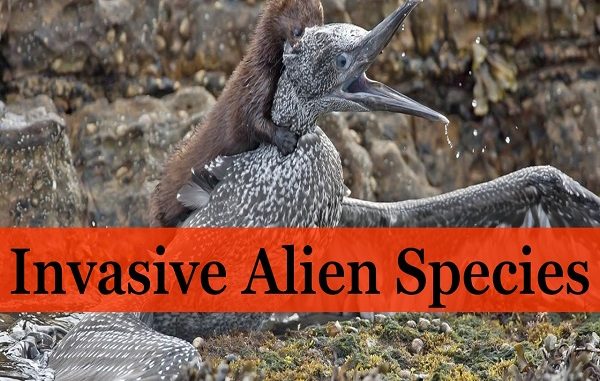Invasive Alien Species: A Growing Threat to Biodiversity and Indigenous Communities

By Agnibeena Ghosh
A recent report has shed light on the alarming increase in invasive alien plants and animal species, which are infiltrating ecosystems at unprecedented rates, posing severe threats to biodiversity and economies worldwide. Additionally, these invasive species are negatively impacting the well-being of indigenous communities, who rely on nature for their sustenance and cultural identity. The report reveals that invasive species are a result of increased global trade and human travel, with the annual costs of managing them skyrocketing, exceeding USD 423 billion.
The term “invasive alien species” refers to plants, shrubs, microbes, and other organisms that have been introduced to new regions through human activities. These intruders disrupt native species’ growth, ultimately affecting ecosystem functions, goods, and services. A striking example can be found in Kerala, where the Caribbean false mussel (Mytilopsis sallei) has decimated native clams and oysters, essential for local fisheries.
Mytilopsis sallei originally hailed from the Atlantic and Pacific coasts of South and Central America. Researchers suspect that it made its way to India via ships, subsequently spreading to estuaries through smaller fishing vessels frequently traversing between coastal oceanic waters and Kerala’s fishing harbours. This invasive species likely facilitated the proliferation of the ‘Varathan Kakka’ (an ‘alien bivalve mollusc’ in Malayalam) across the state by transporting it into new waters.
The recently published report, titled the “Assessment Report on Invasive Alien Species and their Control,” highlights that not all alien species become invasive, but a significant proportion do, becoming invasive alien species. This report was compiled by representatives from the 143 member States of the Intergovernmental Platform on Biodiversity and Ecosystem Services (IPBES).
According to the report, approximately 6% of alien plants, 22% of alien invertebrates, 14% of alien vertebrates, and 11% of alien microbes are known to be invasive, posing significant risks to both nature and humanity.
Many invasive alien species have been intentionally introduced due to their perceived benefits, often without a full understanding of their negative impacts. These introductions occur in various sectors, including forestry, agriculture, horticulture, aquaculture, and even as pets. Additionally, there are instances of unintentional introductions through trade routes and contaminants.
The report further highlights that there are over 37,000 alien species recorded globally, with more than 3,500 of them being invasive alien species. These invasive intruders have played a significant role in approximately 60% of recorded global plant and animal extinctions.
Water hyacinth (Pontederia crassipes) emerged as the most widespread invasive alien species on land globally, followed by Lantana (Lantana camara), a flowering shrub, and the black rat (Rattus rattus) as the second and third most widespread, respectively.
What is particularly concerning is that more than 2,300 invasive alien species have infiltrated lands managed, used, and owned by Indigenous Peoples across all regions of the Earth.Indigenous communities have deep connections with native species, which fulfil their emotional and daily needs. The arrival of invasive species often leads to feelings of despair, sadness, and stress among these communities.
Furthermore, biological invasions have detrimental effects on the autonomy, rights, and cultural identities of Indigenous Peoples and local communities. This impact is manifested through the loss of traditional livelihoods and knowledge, reduced mobility and access to land, and increased labour required to manage the invasive alien species.
Addressing the invasive alien species issue is not only a matter of environmental concern but also a matter of social justice and human rights. Indigenous Peoples and local communities, who are often the most vulnerable to the impacts of these invasions, deserve protection and support in dealing with this growing threat.






